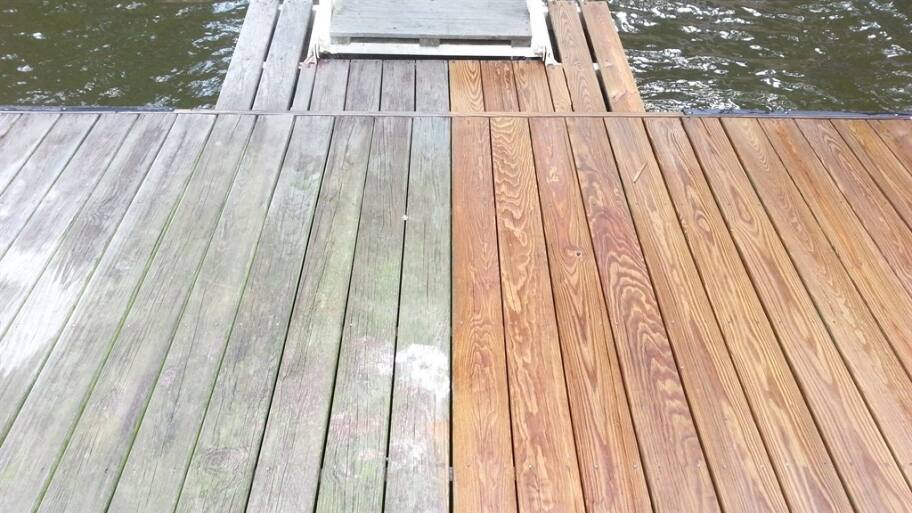All About Elkton Power Washing
Table of ContentsWhat Does Abingdon Power Washing Mean?Indicators on Perryville Power Washing You Need To Know9 Simple Techniques For Churchville Power Washing
Link any devices (like this chemical injector). Run water through the washer for one minute to prime the system and remove any air. Squeeze the spray wand trigger to bleed water pressure. Pull the starter cable to start the engine. All pressure washers seem intimidating the very first time you utilize them.
For example, if your pressure washer requires 2-1/2 gpm, time how long it takes your garden pipe to fill a 5-gallon pail. The garden tube need to be 50 ft. long or less and have a 3/4-in. inside diameter, with basic 3/4-in. hose fittings for linking to the washer's inlet. Churchville Power Washing. To guarantee that water flows unblocked through the system, inspect the water inlet filter or screen and tidy it of particles.
Prior to beginning the washer, it's imperative that water is streaming through the washer and out the spray wand. Follow these actions: Tighten up all tube connections so no air can get in the lines. Set the spray wand to a low- or no-pressure setting to avoid recoil, or kickback, when the washer is started.


Begin with the wand's nozzle 4 ft. from your house and slowly move it closer up until you attain the wanted cleaning impact. Grip the spray wand with two hands, direct the water stream at a 45-degree angle to the siding and move the water stream constantly. Pressure washing removes dirt and grime, however it isn't designed to strip paint or kill mildew on siding or decks.
When washing house siding, follow these guidelines: Lay tarps around the house perimeter to protect plants and gather paint chips blown off during cleaning. Homes developed prior to 1977 might have lead paint chips that will need to be gathered and properly disposed of at a harmful waste facility. Don't hold the spray wand "head on" to the siding.
Bel Air Power Washing Can Be Fun For Everyone
Hold More Bonuses the wand at a 45-degree angle to the siding and at a distance that yields the best cleaning results without gouging wood or denting metal or vinyl. Work little locations at a time. To avoid streaks, start cleaning from the bottom and develop. For even cleaning up, use long, overlapping strokes.
Prevent driving water up behind the siding by keeping the spray stream level. Utilize an extension spray wand for reaching greater places. Beware when utilizing a lance extension. The "kickback" can toss it into contact with power lines. Do not spray windows. The high pressure can break them. Tidy cars and trucks and other items with an accessory brush and detergent.
Scour oil and dirt off a garage floor with a detergent: Rinse surface area dirt off the floor at high pressure. Change the nozzle setting to low pressure to dispense cleaning agent. Complete by altering the nozzle back to high pressure and rinsing with water. Renew deck boards by holding the spray wand at a 45-degree angle 1 to 2 ft.
Keep the water stream constantly moving. Use a higher-pressure (2,000 psi or greater) gas-powered washer and a focused spray nozzle setting (15-degree). Aberdeen Power Washing. Cleaning agents and accessory brushes increase cleaning up effectiveness while decreasing cleansing time. When renting or buying a pressure washer, ask what accessories and detergents are readily available for it. To prevent damage to the internal parts, never ever run bleach in the machine or use cleaning agents not designated for use in pressure washers.
In addition, electric power washers need a low-pressure setting on the spray wand. Follow your maker's instructions for using cleaning agents, diluting the cleaning agent and (if essential) connecting a chemical injector (Image 1). For the very best cleaning results, initially, loosen the dirt with plain water under high pressure using a medium spray pattern.
Keep the surface wet to prevent possible discoloration or damage by the detergent. Finish by resetting the nozzle to a medium pattern (or changing the nozzle) and rinsing with plain water. Switch detergents by draining pipes the first detergent from the pressure washer, washing the system with plain water and presenting the next cleaning agent.
For safety, follow these guidelines: Do not point the pressure washer right here at individuals or family pets or put your hand in front of the nozzle. The pressurized water stream could really penetrate your skin or trigger severe cuts. Use security glasses when running the washer. Don't utilize pressure washers while working from ladders. Middle River Power Washing.
The smart Trick of Nottingham Power Washing That Nobody is Talking About
Keep a minimum 6-ft. range when spraying water around power lines, electrical masts or outlets. Prior to uncoupling pipes, stop the maker, turn the water faucet off and squeeze the spray wand trigger to release all water pressure in the system. Engage the safety lock on the trigger when you're not in fact cleaning and when altering nozzle tips.
Place a funnel into a 3-ft. area of garden pipe (one with a male faucet coupling), attach the coupling to the water consumption on the washer and slide a 1-ft. area of hose over Read More Here the water outlet. Start the gas engine and put antifreeze into the funnel up until a constant stream of antifreeze flows from the discharge hose pipe.
If possible, keep the power washer inside in the off-season to prevent damage to the pump, tubes and spray wand. Otherwise, winterize them utilizing only antifreeze created for rvs (Recreational vehicles); see Photo 6. When a gas-powered washer will not be used for a month or more, prevent damage to the engine by draining pipes the system of gas or adding a gas preservative to the fuel tank.